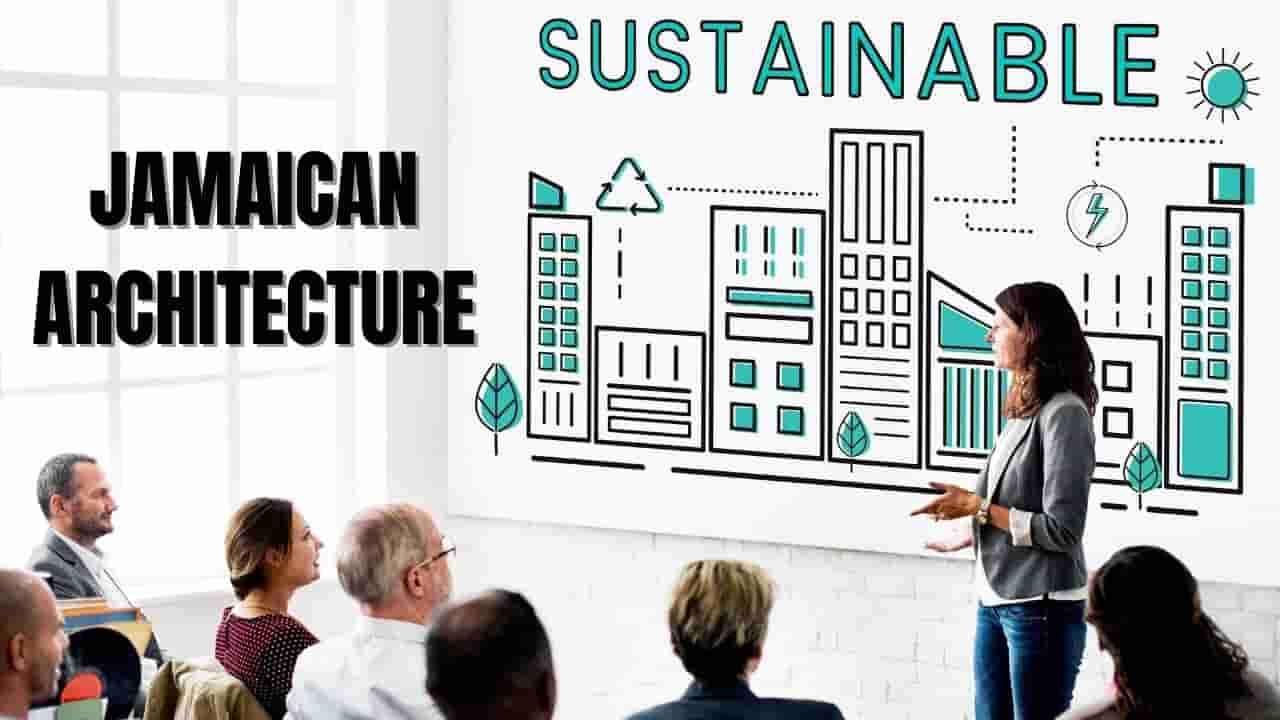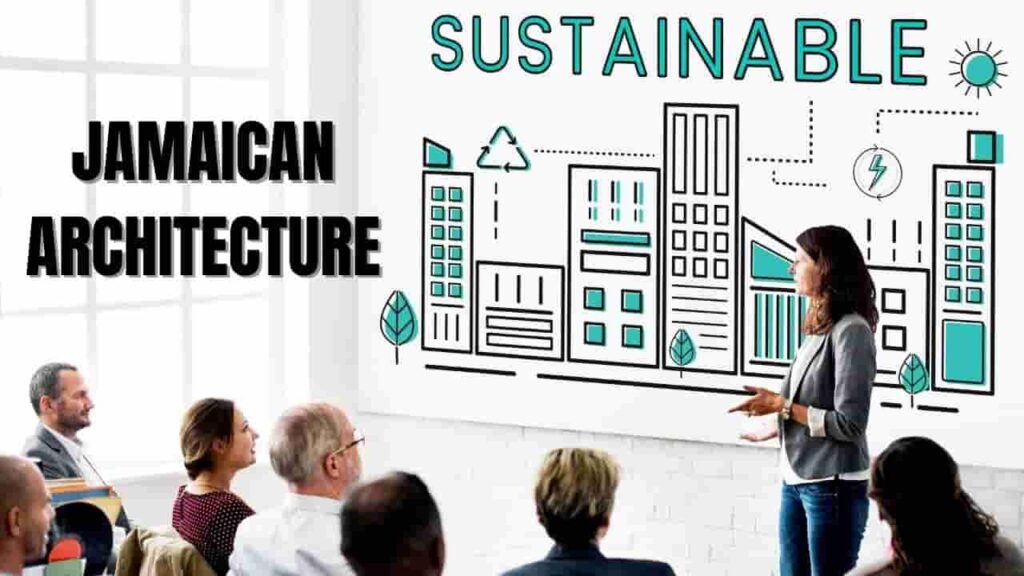The original inhabitants, the Tainos of Central America, named this island “Xamayca” meaning “Land of wood and water” and despite the damage and deforestation of the last five centuries, it is still an apt description of Jamaica which in its 4411 square miles has mountains and plains and many rivers.
The climate is described as “Tropical Maritime” We have seasonal rainfall, tropical temperatures, and relatively high humiditybut good cooling breeze and trade winds. However, we are in a hurricane and earthquake zone.
In Jamaica, over 90% of the people are of African origin but there are many Asian, European and Middle Eastern migrants mixed in. The Taino did not survive the coming of the Europeans but their agricultural practices survive and their building traditions are relevant today.
The population of Jamaica is just under three Million and the economy is based on tourism, agriculture, and bauxite mining.
Vernacular Architecture of Jamaica
There could be no truer use of materials than in the structures of the Tainos whose buildings had thatch roofs that insulated and shaded and porous walls of vertical poles through which light and air could pass. These houses operated on the same principle as hammocks, allowing air to circulate and keep the occupant cool.
The European settlers had other plans. They soon started importing and making bricks, cutting stone, and burning lime to make mortar to build as they knew how. They learned through trial and error what gives a building “climate resilience” as we call it today.
Carpenters, masons, carvers, and other artisans and architects came, from America, Europe, Africa, and Asia, albeit under very different circumstances. They brought with them their idea of what a building should be and the methods and details of putting them together. As cultures of the four continents collided, some aspects of building traditions, of forms and features, were discarded, while others that suited the climate and the way of life were embraced and developed. Architectural styles imported and applied to Civic and Plantation Buildings were adapted for use in towns and countries in buildings of different sizes. Ideas travelled between the island colonies in the Caribbean and up and down the North American coast. Through this complex process, Caribbean Creole vernacular architecture was created.
The resulting buildings were almost of necessity sustainable. For the most part, the materials were local wood, stone, thatch, and earth, suiting the climate and resistance in many ways to earthquakes and hurricanes. I believe we can learn from the principles that these early vernacular buildings embody and offer some examples.
Natural Cooling
There are many examples of early buildings that use natural cooling techniques such as Shading, Cross ventilation & Convection to keep interiors cool during the hot cycles of the day and the year, taking advantage of prevailing winds.
Hurricane Resistance
Hurricanes impact the Caribbean and North America from June through November, often with devastating consequences. The geometry of roofs, reduction of exposed elements, use of ventilating elements to reduce pressure build-up and proper bracing and jointing methods have meant that many early vernacular buildings have survived season after season of hurricanes.
Earthquake Resistance
As we saw in 2010 in Haiti, our close neighbour, earthquakes can take a terrible toll on the peoples and economies of this region. There is evidence that before being completely destroyed by an earthquake in 1692 the town of Port Royal was similar to the city of London before the fire, tall buildings cheek by jowl and of both masonries, and timber construction. In that same earthquake, it was reported that the only buildings that survived in the inland capital Spanish Town, which the English had seized from the Spanish were those built of “Spanish Walling” which is nog construction- a timber frame in-filled with stone or brick in a lime and earth mortar, and rendered with lime mortar- a flexible structure.
- Reinforced concrete construction is now the norm in Jamaica, but opportunities exist for other materials old and new to help us design in ways that are less dependent on imported material and fuel, examples of these are:
- Lime: Once the only bonding agent used, lime is making a comeback as a green material. It is burnt at a lower temperature than cement and reabsorbs carbon dioxide in the setting. It can be used in cast walls, as mortar, and in paints.
- Brick structures again suffered greatly in a major 1907 earthquake.
- Bamboo: A “free” material used in temporary shelter, roadside stalls bamboo has great potential. The Scientific Research Council is looking at the treatment and use of Jamaica’s bamboo resources as raw material for building products. This can be as a framework for masonry or in manufactured sheet products. At Island Village Simon Velez built a stage roof and entry pavilion, bringing three Colombian artisans to teach local carpenters the jointing methods he has developed.
- Thatch: Once freely available palm thatch is becoming scarce, mainly used in the tourism sector. I am advocating for it to be grown as a forest product for roofing screens and furniture
- Timber: I have tried to know the source of my timber, and use a lot of plantation-grown pine, although it does not have the beauty of scarcer hardwoods. At the Cockpit country Information centre, we used the forestry departments thinning, treated with borates, to build railings and walkways.
- Energy: Replacement of electricity generated through burning imported oil is also more and more imperative. The energy used in buildings can be minimized through good passive design, and it is rapidly becoming viable for the remaining energy demand to be met through solar, wind, and geothermal generation. The Jamaican authorities are in the process of making grid-tie possible, reducing the need for battery backup where alternative power is generated.
- Water: Rainwater harvesting and storage, and the use of water-saving devices are all becoming a part of the vocabulary.
Social Sustainability
The Princes Foundation for the Built Environment sponsored a design workshop for the community and has set up a community development organization, the Rose Town Foundation for the Built Environment. I participated in the initial workshop becoming involved it Rose Town thereafter. Through this consultative process, a Masterplan was drawn to rebuild a civic center including training facilities, workshop, and industrial facilities, a park, market, shops, and housing all on the now vacant no-man’s-land, reuniting North and South. Housing proposals are being put forward based on the concept of retaining good buildings where possible and infilling within the existing lots and on the open land. This is considered a better approach than the concrete 4 story walk-up housing blocks which cannot be afforded by the local residents and which provide no private or semiprivate yard or outdoor space for residents.
Within Rose Town the Community Organizations have prioritized water, Training/ job creation, and housing. A Project is about to get underway to provide new water and sewer main and potable water with connections and community standpipes along a repaved street running the length of the community.
 |
| Jamaican Architecture |
So far there have been two construction training projects. A total of 28 youth from the area have undergone three weeks of residential training with another NGO, Falmouth Heritage Renewal, learning basic carpentry and masonry but also experiencing the use of lime and the hand tools used in carpentry. Returning to Rose town the first group continued training with a local trainer and in the process restored a small house adjoining the community centre. The second group roofed and restored an old shop as offices for the Rose Town Foundation for the Built Environment.
With a now functional community, The RTFBE has just received a grant towards setting up a building materials workshop in Rose Town as an income-generating project. Starting with a block-making machine and with plans to establish a woodworking shop to make doors windows shutters etc. Other ideas include panelized buildings out of the wooden pallets that are currently freely available from the nearby warehouses.
A Functional Housing Model
In areas such as Rose Town, security and mutual support, as well as an economic necessity, created a system that saw the “yard” as a functional living arrangement that survives in many urban areas today. The climate allows for outdoor living, and the outdoor space can make up for restricted indoor space. The “yard” has developed as a functional living arrangement that survives in many urban areas today, providing collective security and mutual support with several households sharing the common outdoor living space. The Hallin Bank Project was an opportunity to bring the functioning downtown ‘yard’ to an uptown site. Designed for a group of friends who pooled resources to achieve homeownership, the project sought to retain the 1940ies brick in-filled timber-framed or ”nog” house, keep all the mature trees, and create affordable units and livable communal space, all on a 1/2 acre lot near the new commercial center of New Kingston. Wide frontages, single room deep, two-story units were developed around a courtyard, within the shady courtyard the temperature can be several degrees cooler than the street, and the courtyard provides an opportunity for social gatherings, shared meals, shared childcare, and a degree of security.
Conclusion
In conclusion, the “CAA guide to designing for sustainability” document summarizes the guiding principles I have found important when it says;.
“The main challenges of sustainable construction which emerge are as follows:
• Promoting energy efficiency (energy saving measures; extensive retrofit programs; transport aspects; use of renewable energies)
• Reducing the consumption of high-quality drinking water (relying on rainwater/greywater; reducing domestic consumption with water management systems; waterless sanitation systems and use of drought-resistant plants)
• Selecting materials based on environmental performance (use of renewable materials; reduction of the use of natural resources; recycling;
• Contributing to sustainable urban development (efficient use of land; design for long service life; the longevity of buildings through adaptability and flexibility; converting existing buildings; refurbishment; sustainable management of buildings; prevention of urban decline and reduction of sprawl; contribution to employment creation; cultural heritage preservation);
• Contribution to poverty alleviation;
• Healthy and safe working environment.”

